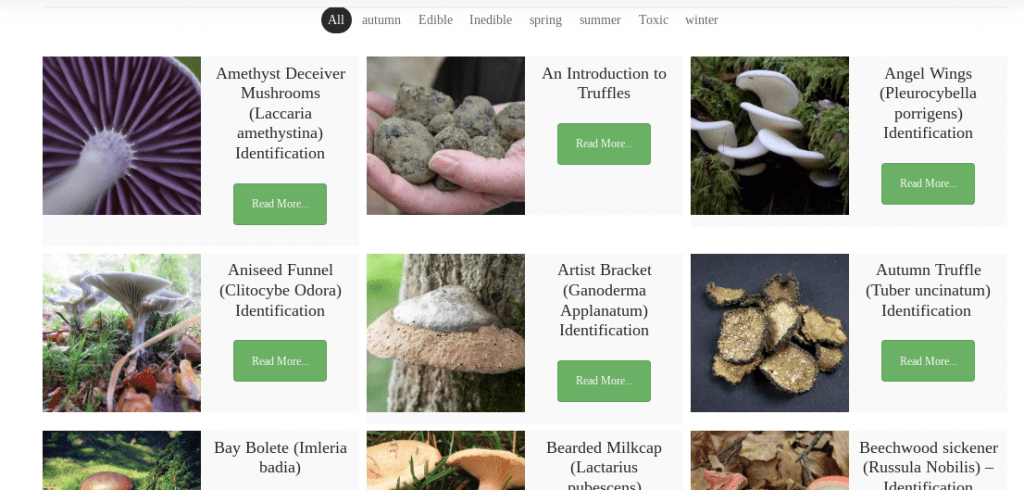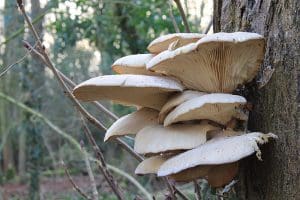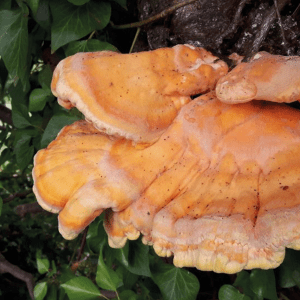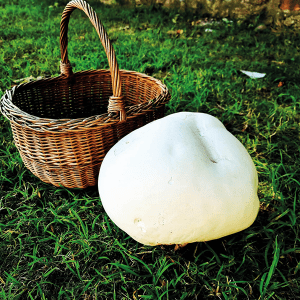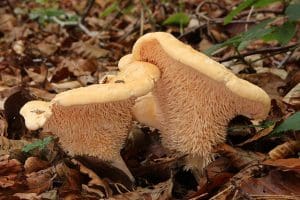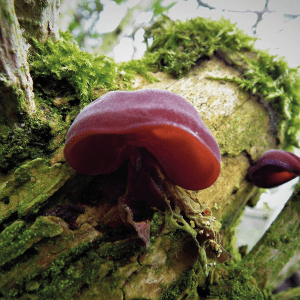Foraging for wild mushrooms is a captivating and fulfilling activity that allows individuals to intimately connect with nature and discover an array of delectable edible treasures. In the United Kingdom, the British Isles are home to a staggering 15,000 species of wild mushrooms or fungi, with abundant growth in woodlands and grasslands. However, it is crucial to approach mushroom foraging with caution, knowledge, and respect for the environment. In this comprehensive guide, we will delve into the captivating world of wild mushroom foraging in the UK, highlighting a wide range of edible mushrooms and providing essential tips to ensure a safe and rewarding experience.
Why we’re Foraging for Wild Mushrooms?
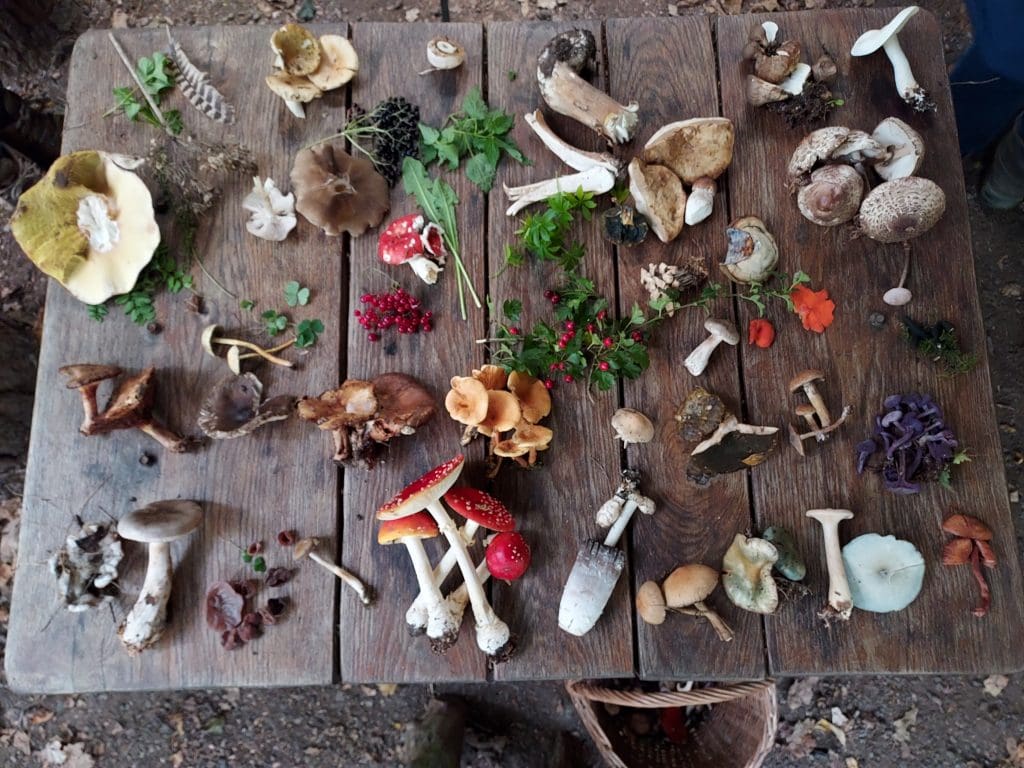
Foraging for wild mushrooms in the United Kingdom offers numerous rewards and benefits. Firstly, it provides an opportunity to discover unique and delicious culinary treasures, each mushroom variety bringing its own distinct character to the table. From the earthy richness of porcini mushrooms to the delicate and fruity notes of chanterelles, wild mushrooms offer a wide range of flavours, textures, and aromas to enhance dishes and create memorable culinary experiences.
Beyond the culinary aspect, mushroom foraging allows individuals to connect with nature in a profound way, immersing themselves in forests, meadows, and woodlands in search of mushrooms. It offers a chance to appreciate the beauty and diversity of the natural world and develop a deeper understanding of ecosystems and their intricate relationships. Foragers also contribute to sustainability and local sourcing by reducing reliance on commercially cultivated foods and promoting an environmentally friendly approach to food sourcing. Additionally, wild mushrooms are often rich in nutrients, vitamins, and antioxidants, offering potential health benefits when incorporated into a balanced diet.
Moreover, the act of foraging itself brings a sense of excitement and discovery, unveiling a world of unique mushroom species, shapes, sizes, and colours. It sparks curiosity and a desire to learn more about the fascinating realm of fungi, creating an ongoing journey of exploration and self-education.
Is it Legal to Forage for Wild Mushrooms in the UK?
Before embarking on a mushroom foraging adventure, it is essential to be aware of and adhere to the specific laws and regulations regarding wild mushroom foraging in the UK. While foraging on public land is generally permitted for personal use, it is important to obtain permission from private landowners and respect any protected or conservation areas. It is also illegal to pick or disturb rare or protected mushroom species, and commercial foraging may require licenses or permits. Responsible foraging practices, accurate mushroom identification, and mindfulness towards sustainability and environmental preservation are crucial. Consulting local resources and experienced foragers can provide valuable guidance on the regulations in your area.
Is foraging legal in the UK?
Where to Start: Learning to Foraging for Wild Mushrooms
To embark on a successful mushroom foraging journey, it is important to establish a solid foundation and learn the art of mushroom identification. Here are some key steps to help you get started:
- Study Mushroom Identification: Begin by familiarising yourself with common wild mushroom species found in the UK. Understand their distinctive characteristics, habitat preferences, and growth patterns. There are several resources available, including field guides, mushroom identification books, and online forums and communities dedicated to mushroom enthusiasts.
- Join Foraging Courses and Workshops: Consider joining foraging courses and workshops led by experts in the field. These courses provide hands-on experience, practical knowledge, and guidance on safe foraging practices.
Find our Courses here - Go Foraging with Experienced Foragers: Accompanying experienced foragers on their expeditions can be an invaluable learning experience. They can share their expertise, teach you the nuances of mushroom identification, and provide insights into the best foraging spots.
- Attend Mushroom Identification Events: Many organisations and nature centres host mushroom identification events and forays, where you can learn from experienced mycologists and fellow foragers. These events often include guided walks and workshops to enhance your mushroom identification skills.
- Research Local Mushroom Varieties: Each region of the UK has its own unique mushroom species and ecosystems. Research the local mushroom varieties that grow in your area to gain a better understanding of what to look for during your foraging expeditions.
- Develop a Network: Connect with other mushroom enthusiasts and foragers to exchange knowledge, tips, and experiences. Online forums, social media groups, and local mycology societies provide opportunities to connect with like-minded individuals and expand your mushroom foraging community.
Find our community here
By following these steps, you will develop a solid foundation in mushroom identification and gain the necessary skills to embark on your own mushroom foraging adventures.
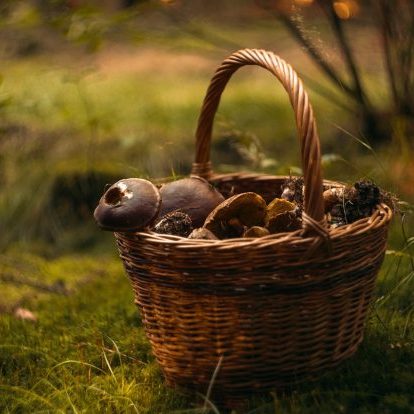
Essential Tips for Safety when Foraging for Wild Mushrooms
When venturing into the world of mushroom foraging, it is essential to prioritise safety and responsible foraging practices. Here are some essential tips to ensure a safe and rewarding experience:
- Seek Expert Advice: If you are unsure about the edibility of a wild mushroom, always seek advice from an expert. Eating a poisonous mushroom can be fatal or cause severe illness, so it is crucial to be cautious.
- Learn the Distinctive Characteristics: Familiarise yourself with the distinctive characteristics of edible mushrooms that you intend to forage. Look for specific features such as cap shape, colour, gill structure, stem characteristics, and any unique identifying marks.
- Use Reliable Field Guides: Carry reliable field guides or mushroom identification books specific to the UK during your foraging expeditions. These resources provide detailed descriptions, photographs, and identification tips to help you accurately identify mushrooms.
- Start with the Most Common Edible Species: Begin your foraging journey by focusing on the most common edible mushroom species. This reduces the risk of miss-identification and increases your chances of finding edible mushrooms.
- Avoid Mushrooms with Unclear Identification: If you are unsure about the identification of a mushroom, it is best to err on the side of caution and avoid consuming it. Some mushrooms may have toxic look-alikes, making accurate identification crucial.
- Leave No Trace: Practice responsible foraging by leaving no trace of your presence in the environment. Avoid damaging the habitat or disturbing other wildlife while foraging.
- Forage in Diverse Habitats: Explore a variety of habitats such as woodlands, meadows, and grasslands to increase your chances of finding different mushroom species. Each habitat offers unique mushroom diversity and foraging opportunities.
- Collect Mushrooms Respectfully: When collecting mushrooms, use a knife or scissors to cut them at the base, leaving the mycelium intact. This allows the mushrooms to continue growing and ensures the sustainability of the mushroom population.
- Keep Records: Keep a record of the mushrooms you encounter during your foraging expeditions. Note the habitat, date, and any distinctive features to enhance your knowledge and aid in future identification.
- Continuously Educate Yourself: Mushroom identification is a lifelong learning process. Stay curious, continue expanding your knowledge, and learn from experienced foragers and mycologists.
You can find our detailed Mushroom Guides here
By following these essential tips, you can ensure a safe and rewarding mushroom foraging experience in the UK.
Common Edible Mushroom Species in the UK
The British Isles are home to a diverse array of edible mushroom species. Here are some of the most common and spectacular wild mushroom species found in the UK:
- Oyster Mushroom (Pleurotus ostreatus):
- Habitat: Generally found in a tiered formation on tree stumps, particularly beech.
- Characteristics: Shell-shaped cap varying in hue from cream to grey-blue, with a white underpart and short, stubby stem.
- Edibility: Edible, with a delicate taste.

Stus-Images-CC-BY-SA-3.-via-Wikimedia-Commons
- Chicken of the Woods (Laetiporus sulphurous):
- Habitat: Often found growing on oak trees.
- Characteristics: Made of fan-shaped layers with wavy edges, soft and creamy in colour when young, with an acid-yellow underside.
- Edibility: Edible, especially when young, but may cause an allergic reaction.

- Giant Puffball (Calvatia gigantea):
- Habitat: Found in meadows and on sports pitches.
- Characteristics: Colossal fungi often mistaken for a football, with young puffballs having soft, clean white skin and firm flesh.
- Edibility: Edible, best eaten when young.

4. Hedgehog Fungi(Hydnum Repandum):
- Habitat: Growing in arcs or rings in any type of woodland.
- Characteristics: If it’s light brown in colour, growing on the forest floor with a stem and if it has spines instead of gills, it’s a hedgehog mushroom.
- Edibility: An excellent gourmet mushroom, it’s sweet and nutty and they store well in the fridge for up to three weeks.

Holger Krisp, CC BY 3.0 , via Wikimedia Commons
5. Beefsteak Fungus (Fistulina Hepatica):
- Habitat: Growing from a dead or damaged oak tree, often low down the trunk or stump.
- Characteristics: A tongue shaped bracket fungus that when damaged drips a dark red liquid that looks a lot like blood
- Edibility: Best when young, they make an excellent meat substitute. Older one are great for mushroom jerky.
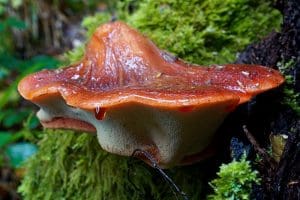
6. Dryads Saddle (Cerioporus squamosus):
- Habitat: They can be found on dead broad-leaved stumps and logs and on living broad-leaf trees.
- Characteristics: A large fan shaped cap, upto 50 cm across. Brown to yellow in colour and covered with dark ‘scales’, the stems are very solid and darken towards the base becoming almost velvety.
- Edibility: When young and tender they have an unusual watermelon/cucumber flavour, becoming more mushroomy as they age.
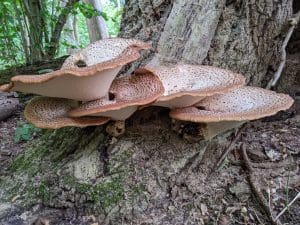 Dryads saddle, large cluster at the base of a tree in summer-forager Fez
Dryads saddle, large cluster at the base of a tree in summer-forager Fez7. Jelly Ears (Auricularia auricula-juda):
- Habitat: On dead or dying broadleaf wood, in particular, Elder.
- Characteristics: Brown and very much resembling a human ear in look and texture. They hang down towards the ground and if you collect them from Elder tree’s there are no look-a-likes.
- Edibility: Its texture lends itself towards oriental cuisine, however, soaked in strong fruit juice and covered in chocolate, it makes an interesting confectionery.
8. Scarlet Elfcups (Sarcoscypha austriaca):
- Habitat: Found in winter and early spring on dead or decaying damp hardwood, particularly willow and hazel.
- Characteristics: A circular, cup-shaped fruiting body, up to 5cm across. The inside of this fungi’s cup is a brilliant red.
- Edibility: A tasty mushroom, well worth the effort of cleaning. There is some controversy as to whether this mushroom can be eaten raw.
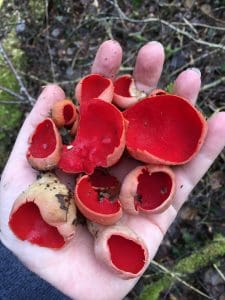
These are just a few examples of the edible mushroom species you may encounter during your foraging expeditions in the UK. However, it is crucial to accurately identify each mushroom before consuming it.
Further Resources and Precautions When Foraging for Wild Mushrooms
Foraging for wild mushrooms requires continuous learning and ongoing education. Here are some additional resources and precautions to enhance your mushroom foraging journey:
- Foraging Guides: Explore comprehensive foraging guides to learn about the seasons, locations, and identification of various edible mushrooms.
- Foraging Courses: Consider joining foraging courses led by experts to gain practical knowledge and hands-on experience.
- Mushroom Identification Books: Invest in reliable mushroom identification books specific to the UK to expand your knowledge and enhance your identification skills.
- Local Mycology Societies: Connect with local mycology societies and organisations to participate in events, workshops, and mushroom identification sessions.
In addition to these resources, it is essential to take necessary precautions while foraging for wild mushrooms. If you are unsure about the edibility of a mushroom, seek advice from an expert before consuming it. Eating a poisonous mushroom can have severe consequences, so it is crucial to prioritise safety.
Conclusion when foraging for edible wild mushrooms
Foraging for edible wild mushrooms in the UK offers a multi-faceted experience that combines culinary delights, a deeper connection to nature, sustainability, potential health benefits, and the joy of discovery. By following essential tips, continuously educating yourself, and practising responsible foraging, you can embark on a safe and rewarding mushroom foraging journey in the beautiful landscapes of the United Kingdom. Remember to prioritise safety, accurately identify mushrooms, and respect the environment while enjoying the unique flavours and experiences that wild mushrooms have to offer. Happy foraging!
Learn more about Mushrooms in other parts of the world




